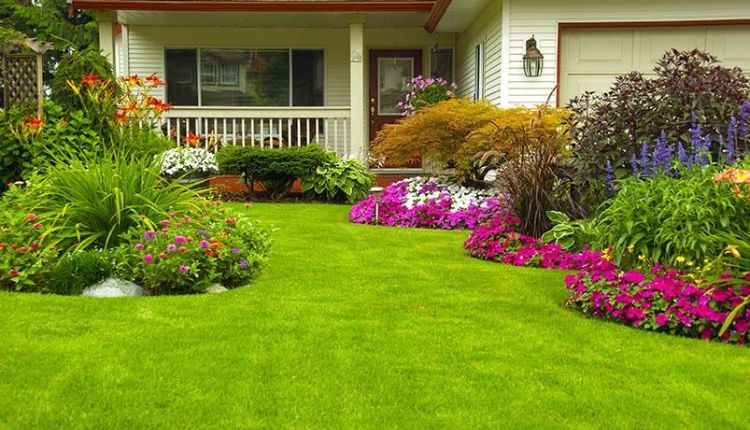A beautiful, green lawn doesn’t just happen on its own. It’s the result of consistent care, proper techniques, and a little seasonal know-how. Whether you’re starting fresh or maintaining an established yard, mastering yard work is key to achieving a lush, healthy lawn that enhances your home’s curb appeal and provides a relaxing outdoor space. Here’s your step-by-step guide to turning your yard into a thriving oasis.
1. Know Your Grass Type
Before diving into lawn care, it’s important to understand what type of grass you have. Cool-season grasses like fescue, Kentucky bluegrass, and ryegrass thrive in northern climates, while warm-season varieties like Bermuda, zoysia, and St. Augustine do better in southern regions. Knowing your grass type will help you determine the best mowing height, watering schedule, and fertilization strategy.
2. Mow Properly and Consistently
Mowing is more than just cutting grass—it’s a science. Follow the one-third rule: never cut more than one-third of the grass height at once. Cutting too short stresses the lawn, makes it vulnerable to weeds, and leads to brown patches. Keep your mower blades sharp to ensure a clean cut, and vary your mowing pattern weekly to prevent ruts and promote even growth.
Pro Tip: Leave the clippings on the lawn. They decompose quickly and return nutrients to the soil, acting as a natural fertilizer.
3. Water Deeply, Not Frequently
One of the biggest mistakes homeowners make is overwatering. Frequent shallow watering leads to weak root systems. Instead, water deeply and less often—about 1 to 1.5 inches of water per week, including rainfall. Water early in the morning to reduce evaporation and prevent fungal diseases.
Use a rain gauge or empty tuna can to measure water application and avoid waste.
4. Fertilize Thoughtfully
Fertilizer fuels your lawn’s growth, but timing and quantity are crucial. Too much fertilizer can burn your grass and pollute waterways. For cool-season grasses, fertilize in early spring and fall. For warm-season grasses, late spring through summer is best. Choose a slow-release fertilizer and follow label directions for safe application.
A soil test every few years can also help you identify specific nutrient needs and avoid over-application.
5. Control Weeds the Smart Way
Weeds are a common nuisance in any yard, but the most effective way to keep them at bay is by maintaining a thick, healthy lawn. Dense, well-cared-for grass naturally crowds out weeds by blocking the sunlight and space they need to take root. If weeds have already appeared, consider using a selective herbicide that’s safe for your specific grass type, or remove them by hand when the soil is damp for easier pulling. Adding mulch around flower beds and trees can also help prevent weed growth while giving your landscape a clean, polished look.
For homeowners in Logan, regular lawn care tailored to the local climate is key to managing weeds and maintaining vibrant, lush turf.
6. Aerate for Better Breathability
Compacted soil makes it hard for water, air, and nutrients to reach the roots. Aeration loosens the soil and helps your grass breathe. You can aerate with a manual or machine-powered core aerator that pulls plugs of soil from the ground. The best time to aerate is during the grass’s growing season: early fall for cool-season grasses, late spring for warm-season grasses.
7. Seed Bare Spots
Bare or thinning areas can make your yard look patchy and unkempt. Overseed these areas with a grass seed blend compatible with your existing lawn. Loosen the soil, spread seed evenly, and keep the area moist until new growth is established. For best results, seed in the early fall or spring when temperatures support germination.
8. Edge and Trim for a Polished Look
Clean edges make a big visual impact. Use a string trimmer or edging tool to define borders along sidewalks, driveways, and garden beds. This small step creates a crisp, professional look and helps prevent grass from creeping into unwanted areas.
9. Maintain Equipment Regularly
Healthy lawn care starts with healthy tools. Keep mower blades sharp, clean tools after each use, and check that your sprinkler system is functioning properly. Well-maintained equipment ensures efficient work and better results.
10. Stay Ahead of Seasonal Tasks
Each season brings different needs for your yard. In spring, focus on raking, dethatching, and early fertilization. Summer is all about mowing, watering, and weed control. Fall is ideal for aeration and seeding, while winter is time for maintenance and planning.
Staying proactive helps your lawn stay strong year-round and makes each season’s work more manageable.
Final Thoughts
Mastering yard work doesn’t require expensive tools or professional landscaping services—just knowledge, commitment, and consistency. With the right care, your lawn can be the envy of the neighborhood: thick, green, and welcoming.
Investing time in your yard is more than a chore; it’s an opportunity to create a space you love. So grab your gloves, fire up the mower, and start building the lawn of your dreams—one smart step at a time.






